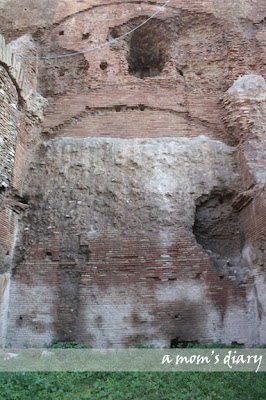One of the most recognizable landmark of Rome Col osseo (Col osseum). Now a mere shell, the Colosseum still remains ancient Rome
Long after the Colosseum ceased to be an arena to amuse sadistic Romans, it was struck by an earthquake, leaving behind the crumbling structures. Centuries later, its rich marble facing was stripped away to build palaces and churches.
Long after the Colosseum ceased to be an arena to amuse sadistic Romans, it was struck by an earthquake, leaving behind the crumbling structures. Centuries later, its rich marble facing was stripped away to build palaces and churches.
An inside view of the Colosseo with several tiers of seats and an intricate maze beneath where the gladiators/beasts were kept prior to being hoisted up onto the platform for their battles. A small section of the platform has been reconstructed at the far end.
Few steps away is the Arco Constantino (Arch of Constantine
Nearby Forum Romano (Roman Forum) was the heart of ancient Roman empire – a center for trade, religion, and politics that attests to the military and architectural grandeur of ancient Rome
Next to the Forum is Palatino (Palatine Hill), which was once covered with the palaces of patrician families and early emperors. Today it's a tree-shaded hilltop of gardens and fragments of ancient villas.
See the indentations on the ruin? The lower curve marks the ceiling, and it ain't all that tall. Apparently ancient Romans were pretty small in size.
Piazza del Campidoglio stands on the summit of Capitoline Hill, the spiritual heart of ancient Rome Senatorial Palace
Teatro di Marcello (Theatre of Marcellus) was an ancient open air theater, with rows of arches and unusually high windows.
Second only to the Colosseo, Circo Massimo (Circus Maximus) was one of the most impressive structure in ancient Rome
We ended our day with dinner at Trastevere, a district separated from the heart of ancient Rome Rome
 |
| In Rome, what else would you eat but pasta, pizza and gelato? |



















No comments:
Post a Comment